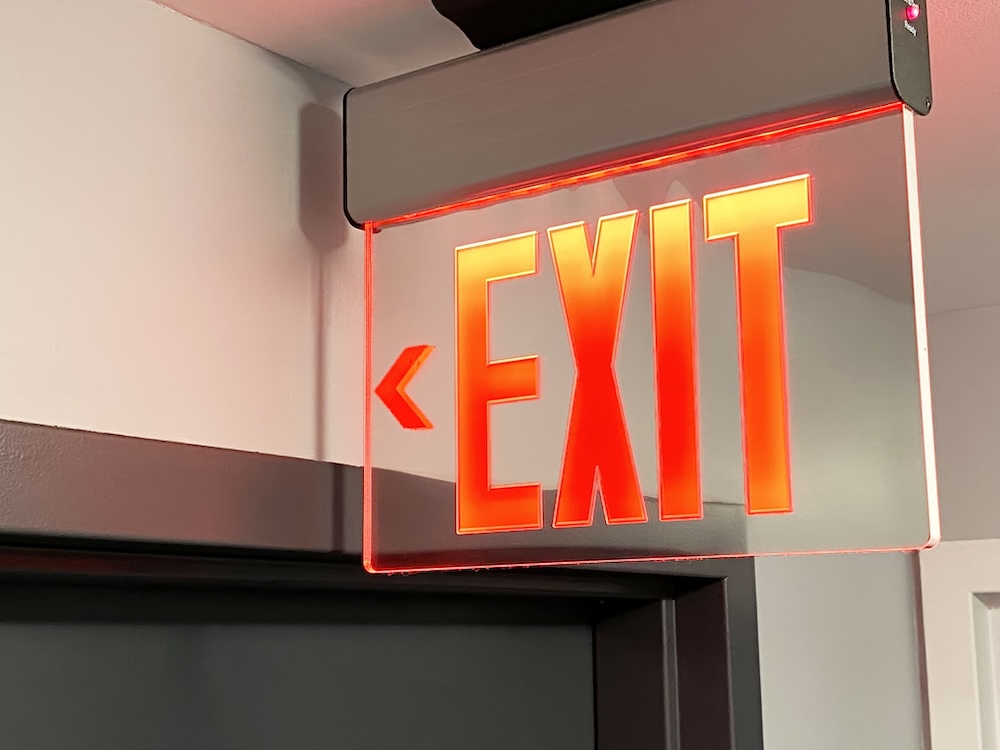Follow this roadmap for how to assess bank sizes, meet LOC criteria, and forge productive banking relationships that support your goals.
Finding the right bank to provide a line of credit (LOC) for your private business purpose mortgage bridge originator (private lender) can be challenging. Just a small number of banks understand this industry, and navigating a bank’s structure to find the correct person can be difficult. Once you have accomplished that multi-layered task, the question still remains, “Am I the correct size for this bank, and are they the right fit for my private lending business?”
Finding the Right Banking Fit
Banks come in all sizes, ranging from small local banks that may have only a few branches to behemoths that operate in every major market. Depending on the bank’s size and structure, varying Total Credit Exposure (TCE) limits dictate the amount available to lend to any one counterparty. Similarly, opportunities too far below a TCE limit are also not a fit.
Once you find a bank that offers LOCs for your purposes, seek out the relevant banker to discuss limits. There is some variance across bank business lines, so not every banker may know the limits specific to your specialty. Early on in your conversation with the right person, ask about the ideal line sizes for the bank and whether there are certain debt-to-equity ratios they target.
At a high level, banks can be broken down into four broad size categories in terms of how much they lend to a given relationship:
1.Small local banks: up to $10 million
2.Regional or small national banks: $10 million to $100 million
3.National banks: $25 million/$50 million to $250 million/$300 million
4.Wall Street Banks: $100 million/$200 million plus
There are certainly exceptions and gray areas, but these ranges can serve as a broad guide. If you zoom in on the banks that are regular providers of lines of credit to private lenders, only a few all into each size range; therefore, it’s important to speak with the banks that provide LOCs in the range that works for your lending business.
Understanding Bank LOC Relationship Requirements
Bank LOCs are not for every private lender. Knowing that banks have many regulations and requirements governing how they lend money, private lenders must determine whether they are willing to endure LOC due diligence, set up, and adherence to their ongoing process and covenants.
Although not all bank LOCs are created equally, they do share certain characteristics. If any of the following sound familiar, you may run into challenges finding a bank LOC if you’re a private lender.
Raises capital through senior secured debt instruments (e.g., promissory notes) that conflict with the way bank LOCs are collateralized. Diversifying investors is more important than diversifying how capital is raised because having too many different structures can be confusing for institutional capital and make it difficult for the private lender to manage capital. Raising capital through secured senior debt is in direct conflict with the bank, so that type of capital cannot be counted as capital nor in the debt-to-equity ratio. Private lenders can still raise capital that way, but they will need to qualify for a bank line with their other capital structures that do not conflict with the bank’s.
Typically originate unconventional loans. These categories include:
>Second liens
>Owner occupied
>Related party loans
>Maturities exceeding 24 months
>Very high Loan-to-Value (LTV)/Loan-to-Cost (LTC), approaching or exceeding 100% for as-is LTV and LTC and exceeding 80% for LTARV
>Large concentrations in individual loans or borrowers
>Off-the-run asset classes like land, hotels, or cannabis.
Banks will typically limit any single loan or borrower to 10%-15% of the line capacity, so if the lender specializes in very large loan amounts or has only a few borrowers that originate most of their volume, those could represent concentration concerns for the bank and be limited on the line. Unconventional loan types would generally be ineligible on a bank’s borrowing base, so lenders would need to have sufficient collateral that would be eligible to effectively use the LOC. Lenders should keep the loan products that have made them successful, so continuing to originate these types of loans is not an issue, but sizing the line should take into consideration the portion of their production that is eligible for the line of credit.
Produces manual and inconsistent financial reporting and loan tapes. There is no formal metric here, but a private lenders that is unable to produce timely financial reporting and loan tapes (within 30 to 90 days of quarter or year-end), loan tapes with sufficient and accurate information, or loan tapes and financial records that do not reconcile sends red flags to the bank that the private lender is not managing the business well enough.
Major derogatory items on principals’ background and credit checks. Significant criminal records such as fraud and financial crimes of principals could present a notable risk to qualification. Liens and judgments are major concerns, and if they result in a bank or other financial institution losing money, they are probably also non-starters. Patterns of legal troubles and lawsuits, particularly if the private lender has a habit of being litigious, are major items as is very poor credit. Minor items include small credit dings, especially those in the distant past or related to the Great Recession. One-off lawsuits or typical private lender lawsuits where a borrower sues to try to delay a foreclosure are also minor.
Processes for property valuations, inspections, insurance, title, and financial reporting are all done internally. This situation could potentially represent a conflict-of-interest risk. Banks like to see checks and balances and third-party involvement. If the private lender controls too much of the process, there are opportunities for conflicts of interest and fraud.
The quality of involved third-party vendors also matters. They should generally be reputable companies limited to involvement in arm’s length transactions (not a family member’s inspection company, for example). None of these are hard lines, perhaps other than typical bank valuation requirements stemming from the Financial Institutions Reform, Recovery, and Enforcement Act (FIRREA) and the Interagency Appraisal and Evaluation Guidelines. It is more a matter of seeing the whole picture and how the private lender protects against potential conflicts.
There is some flexibility around each of the items mentioned, depending on the bank. Generally, however, these are strictly reviewed factors and are important to consider when contemplating your private lender’s eligibility.
Beyond underwriting criteria, every bank has nuances related to its loan terms. You must carefully consider those unique factors, but most bank LOCs have similarities, including:
>LOC size ranges related to their TCE limits.
>Direct pledging of mortgage loans through an assignment of the mortgage or deed of trust and an endorsement of the promissory note via an allonge.
>Advance rates based on outstanding loan amount, underlying property value, or some combination of the two, either on a loan-by-loan basis, or on a portfolio level.
>Financial covenants like DSCR minimums and total senior liabilities to tangible net worth maximums, commonly known as the debt-to-equity ratio (D:E).
>A non-use fee, which can vary; banks pay to have committed capital LOCs, so non-usage can result in a loss for the bank.
Positioning for Successful Evaluations
It can be difficult to find a bank in your size range, locating the correct person inside the bank, and then presenting your private lender the right way. Attending conferences, joining organizations like AAPL, and asking attorneys, accountants, service providers, and other private lenders are all great ways to learn which banks may be compatible and how to connect with the key people within them.
When speaking with a bank in your size range, emphasize your experience as a private lender. Specifically, discuss your experience in originating and holding loans on your books (brokering, white labeling, and servicing for others is not the same as managing balance sheet risk), managing troubled loans and borrowers, your core loan products and geographies, historical default rates and realized losses, and what differentiates you from other private lenders to keep borrowers coming back.
Think of a bank as a lender in the same way you are. There may be automatic deal killers, but in general, each LOC opportunity is a package made up of various characteristics and compensating factors. For example, one misunderstanding is that banks primarily care about origination volume. Although volume is an indication of how well you can source, underwrite, and originate loans, a more important metric for banks is the balance sheet. Managing capital risk and working through distress are more telling than how many loans a private lender can originate and sell.
Using one of the covenant metrics mentioned above, assume most banks would like to see a D:E ratio of 1:1. So, if you have $10 million of equity on the private lender’s balance sheet, assume you could qualify for an LOC up to $10 million.
Banks look for more balance sheet than it would take to fund the remainder of the loan behind their advance rate because your private lender must be able to work through any distress and buy back any defaults should they arise. Banks want to lend to private lenders that can solve their own problems with loans when borrowers become distressed, stop making payments, or raise unexpected issues. Private lenders need to have both the capital liquidity and know-how to buy these loans off the LOC to quickly and efficiently solve issues.
Preparing and asking the right questions
It is equally important to make sure the bank and LOC structure fit your private lending business. Ask these questions early in the process:
>Does your bank require shipping of collateral and assignment recording?
>How are loans pledged, and do you re-underwrite or reject loans for reasons not explicitly stated in the loan agreement?
>What are the economics/fees beyond the standard legal deposit, origination fee, and rate?
>What is the draw process—how easily can a private lender access their LOC availability—and are there any requirements related to loan payoffs?
>Do you require full personal guarantees, audited financials, and a minimum deposit requirement?
>Does the private lender have to be set up as a fund, or are other structures permissible?
>Do you have flexible structures such as a working capital/cash management line, or are all LOCs borrowing base structures?
Pursuing an LOC should be viewed as a long-term relationship with a bank, not a single transaction. The time, effort, and expense are not worth the costs if the line does not renew. Similar to how many private lenders have repeat borrowers, a handful of which make up a significant portion of their origination volume, a bank looks for long-term, mutually beneficial relationships with private lenders who are easy to work with.
The terms may not be the best initially, but as the relationship develops and trust builds, those conversations become easier, just as they do with your best borrowers.
Bank LOCs provide access to large amounts of capital at a cost typically below that of individual investors. For private lenders that have more deals than capital available, LOCs can provide rapid growth potential and wider profit margins. The key is having the foresight and willingness to invest in your private lender to find the right banking partner, engage in thoughtful conversations to ensure a mutually beneficial relationship, and complete due diligence, closing, and adjusting to the pledging process.











Great article by Mark. He is extremely knowledgeable and a great resource.